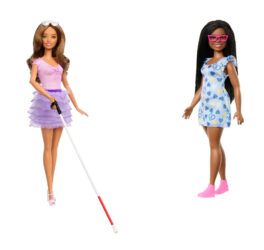
Movie studios can expect to lose up to $130 million per film when their big-time offerings lack authentic diversity in their storytelling, a UCLA report published Oct. 6. concludes. The analysis is based on more than 100 films released between 2016 to 2019.
Researchers with the UCLA-based Center for Scholars and Storytellers estimate that large-budget films — those totaling $159 million or more — will incur a significant loss in opening weekend box-office revenues when there is little racial, cultural or other diversity among cast and crew. A $159 million movie, they predict, will lose $32.2 million in the first weekend, approximately 20% of its budget, with a potential overall loss of $130 million — a staggering 82% in total.
A $78 million movie, they estimate, will lose $13.8 million during opening weekend, with a potential total loss of $55.2 million, or 71%.
“We asked, what is the cost of lacking diversity? Hollywood is a business, and no business wants to leave money on the table,” said the study’s senior author, Yalda Uhls, a UCLA adjunct assistant professor of psychology and founder and executive director of the center.
“While increasing numerical representation behind and in front of the camera is critical, truly empowering people from diverse backgrounds is the key,” she added. “For example, make sure the writers’ room is open to dissenting opinions, that a wide net is cast for hiring, and that younger, less-tenured voices are encouraged.”
The box office success of such recent films as “Coco,” “Black Panther” and “Crazy Rich Asians” has demonstrated that diversity among casts and key decision-makers can be highly profitable. UCLA’s Hollywood Diversity Report, produced annually by a team of researchers including UCLA’s social sciences dean Darnell Hunt, has shown that while movies with racially diverse casts perform better at the box office, minorities and women still have far to go to achieve parity with their white and male counterparts, particularly in writing and directing jobs.
“The U.S. has a long way to go to make sure that our stories and the stories we tell about our own history truly reflect all of its people,” Uhls said. “We hope that our findings act as a call to action for the industry.”
For their analysis, the researchers created a rating they call “authentically inclusive representation,” or AIR, which utilized data from the diversity-focused movie and TV review website Mediaversity Reviews to identify films that included diverse voices, people and cultures, both in front of and behind the camera, as well as those that did not. Their reviews also gauge how authentic and genuine films were in portraying diverse cultures. In all, the researchers analyzed 109 films.
They ensured that Mediaversity’s data were comparable to another robust source of diversity ratings, Grade My Movie, and that the site’s overall film rankings correlated closely to the rankings on well-known film-review aggregators Metacritic and Rotten Tomatoes.
The report’s authors then used a statistical analysis technique called multiple linear regression to estimate the expected loss of revenue for those films of that lacked AIR in three production budget classifications: small ($15 million or less), average (approximately $78 million) and large ($159 million or more).
“Storytelling that lacks AIR in race, gender and sexuality can have immediate and significant costs,” said Gerald Higginbotham, a UCLA psychology doctoral student and lead author of the report, “Beyond Checking a Box: A Lack of Authentically Inclusive Representation Has Costs at the Box Office.”
“In light of the national conversation around systemic racism, it is well past time for entertainment media creators to think beyond on-screen numerical representation as a marker of ‘inclusivity and diversity,’” Uhls said. “Diverse representation in race, gender, sexual orientation, disability and their intersections, particularly behind the camera, is still lacking and slow to change. Without including a broader swath of voices on every level of a production, from set decorator or costume designer to director or actor, stories and characters will come across as stereotypical.”








